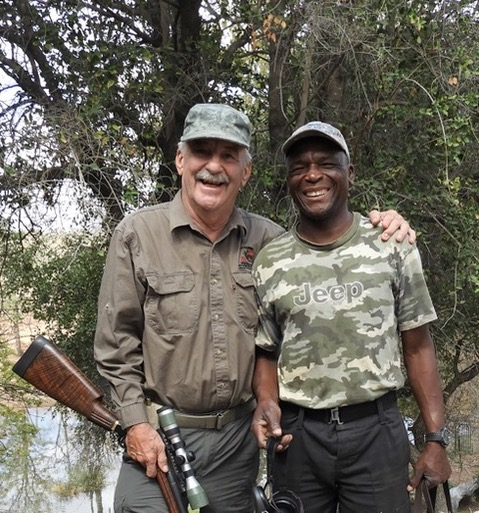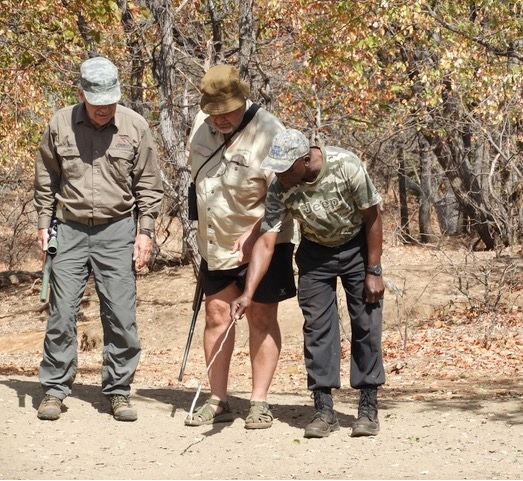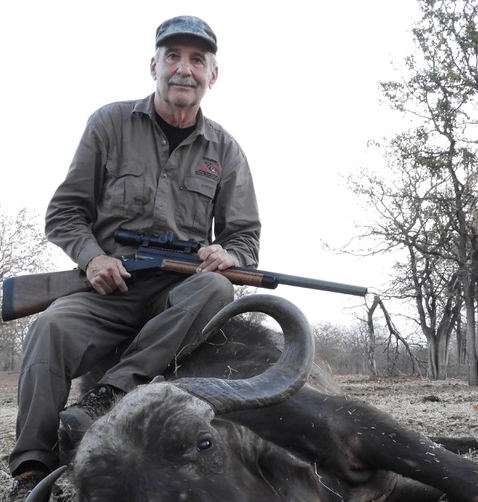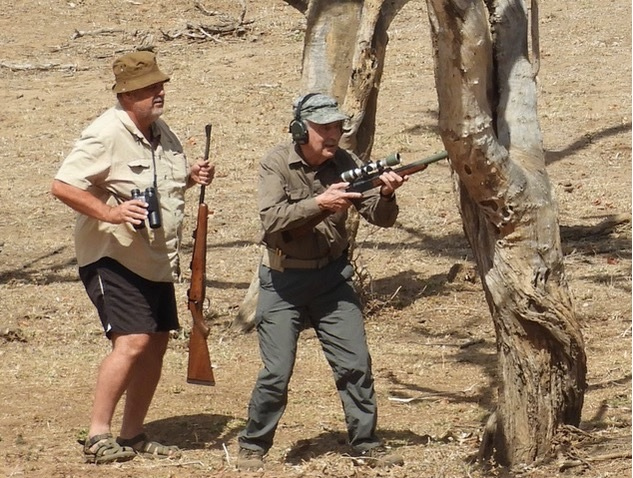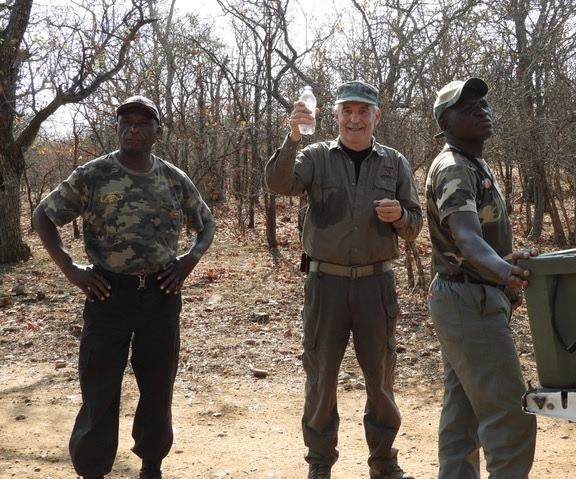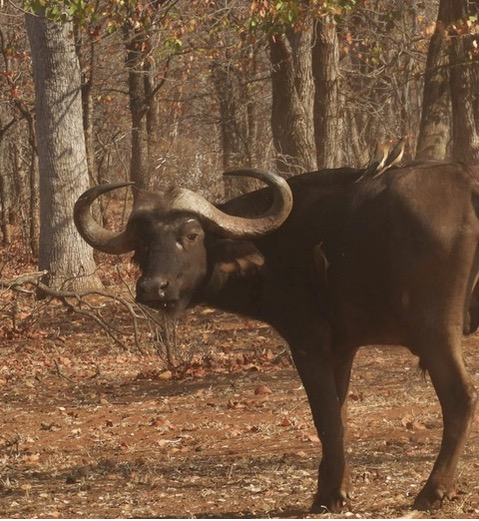Apr 24, 2019 | News
[vc_row][vc_column][vc_column_text]The zebra is Africa’s most recognizable animal, requiring no description. Although related to both horses and asses and of the same Equus genera, the zebra is found only on the African continent, and evidence that it existed elsewhere in prehistory is unclear. In Africa the zebra is not found continent-wide, nor even close, but it occupies an extremely broad range across East and Southern Africa. There are actually three species of zebra: Plains, mountain, and the Grevy’s zebra; there are, or were, seven races or subspecies of plains zebra and two of mountain zebra; the distinct Grevy’s zebra stands alone.
All zebras are primarily grazers, social animals that form into herds. Typically, these are harems with a dominant male and his mares. With both mountain and plains zebras these are permanent bonds, but Grevy’s zebra groups are temporary, with the males wandering off on their own after a few months. With all zebras, surplus males form bachelor groups. Size of the herds depends on population density and available grass and water; mountain zebras, usually in harsh habitat, are found in smaller groups—twenty is a lot—while plains zebras can form into large herds.
All visitors to Africa want to see this signature animal, and indeed they’re marvels to observe…it doesn’t take long before the seemingly nonsensical stripes make perfect sense: In shadows the zebra’s camouflage is amazing. Even in sunlight the stripes merge and blend…and imagine what a predator, absent color vision, is observing in black-and-white.
I am not a casual visitor in Africa. I love to observe her wildlife, but I make no secret that I am a hunter, always looking with a hunter’s eye. So, with zebras, I am studying the striping patterns and trying to locate the stallion in the group. This is fascinating…and often difficult! I must also make no secret that I enjoy hunting zebras! Sorting the correct animal from the herd is an interesting and sometimes frustrating puzzle. When successful the meat is unusually marbled and fully utilized…and a zebra rug seems almost an essential safari memento!
I do understand that, accepting their resemblance to the horses we love, anti-hunters, many non-hunters, and all too many hunters are shocked by the concept of hunting a zebra. The best answer I have to the question, “How could you possibly kill a zebra?” comes easy: “Only with great difficulty!” We will discuss this, but first we need to get back to this matter of stripes.
BLACK AND WHITE?
The three species and several races of zebras vary in striping patterns, but universally have vertical stripes on the body and horizontal stripes rump and legs. The several plains zebras have stripes all the way to the belly, while the mountain and Grevy’s zebras have a white belly, their vertical stripes stopping short. It’s commonly believed the zebra is a white animal with black stripes, but recent research suggests the opposite: The zebra is a black animal, with white added during development. While some varieties have distinct striping, all are pretty much black and white…except: The mountain zebras have undertones of brown as youngsters that remain on the face in maturity. And several races of plains zebra have noticeable “shadow stripes” between the black and white bands that can be brown, gray, or muted.
So, which zebra are we looking at? There are hybrid zones, and today there are differences between historic native ranges and current distribution. The three species remain pure: At least in the wild, plains zebras, mountain zebras, and Grevy’s zebra do not interbreed! But some of the subspecies, and exactly where they range today, are a bit messy. Relatively little precise DNA work has been done because, after all, a plains zebra is not a mountain zebra…and the endangered Grevy’s zebra is very distinctive. Here’s a rough guide:
PLAINS ZEBRA: The plains zebra is Equus quagga. The type specimen, the quagga, E. q. quagga, became extinct in 1878. Once numerous, the quagga lay squarely in the path of South Africa’s settlement; the last wild quaggas were in Orange Free State. A few skins and photographs of one zoo specimen survive, so we know the quagga had vertical stripes on neck and shoulder and a dark body, perhaps with muted stripes. There are six extant plains zebra races, though not all authorities are in complete agreement.
Most widespread and numerous is the Burchell’s or “common zebra,” E. q. burchelli. This is the zebra most prevalent in South Africa, the southern three-fourths of Namibia, and most of Zimbabwe and Botswana. This zebra has the most prominent shadow striping, although zebra stripes are like fingerprints, no two are exactly alike!
Farther north is the Grant’s zebra, E. q. boehmi, found from Zambia’s Kafue (west of Luangwa) north through western Tanzania and on up into Kenya. This is the zebra I hunted in western Zambia, central Tanzania and Masailand, and southern Kenya. Grant’s zebra is a bit bigger than Burchell’s zebra, with mature stallions weighing up to 700 pounds. The big difference: This zebra lacks shadow stripes and has an extremely beautiful black-and-white skin.
The Selous zebra, E. q. selousi was once widespread in central Mozambique, but we almost lost this one. When hunting resumed after the long civil war there may have been as few as 20 Selous zebras in the Marromeu complex. Today there are more than 500, increasing nicely, with a small hunting quota. This is a smaller zebra, but pure black-and-white. Interestingly, the Selous zebra always has a white spot near the backbone, which is said to be where the striping pattern starts!
The Sudan maneless zebra, E. q. borensis. is the northernmost race of plains zebra. Described as late as 1954 by Tony Henley, then a game ranger and later a famous professional hunter, the maneless zebra does in fact have a very short mane! This zebra occupies a limited range in northwestern Kenya, Uganda’s Karamoja District, and southeastern Sudan. The few photos I have seen suggest a thin, muted shadow stripe, but the maneless zebras I saw in Uganda were in too bright light to confirm or deny this!
Chapman’s zebra, E. q. chapmani, is the zebra of Caprivi, adjacent Botswana and Zimbabwe, and southern Angola. Chapman’s zebra is a large zebra, up to 800 pounds, with shadow stripes much like the Burchell’s zebra. A major difference is younger animals are more brownish than black, and some Chapman’s zebras maintain the brownish tint into maturity.
In northeastern Zambia and on up through Malawi and into southeastern Tanzania the zebras are Crawshay’s zebra, E. q. crawshayi. This is the zebra of the Selous Reserve and adjacent areas. My experience is this a big zebra, generally a black-and-white skin with narrower stripes than other plains zebras…but slight shadow stripes are seen on some individuals.
MOUNTAIN ZEBRA: There are two, the Cape mountain zebra, E. zebra zebra; and Hartmann’s mountain zebra, E. z. hartmannae. The two are geographically separated, with Cape Mountain zebra occupying the smallest range of any zebra, isolated mountain habitats in the Eastern and Western Cape. They are visually indistinguishable, except the Cape mountain zebra is the smallest of all zebras, with big stallions weighing less than 600 pounds. Both varieties have white bellies and vertical body stripes, with brownish tints that usually darken with maturity, except on the face. Mature males of both races have a prominent dewlap, which can be a valuable hint when trying to determine sex. Perhaps the most defining visual characteristic of the mountain zebra is a triangular “Christmas tree” marking above the tail, where short vertical stripes meet horizontal stripes on the rump.
The Cape mountain zebra, is considered endangered and is not importable into the United States, but thanks to game ranching has been brought back from the brink and is increasing. Hartmann’s mountain zebra is naturally found in isolated mountain ranges from central Namibia north to southwestern Angola. Thanks to the game ranching industry Hartmann’s zebra is now widespread throughout much of Namibia, and has been introduced into some properties in South Africa. This could prove a problem; Hartmann’s zebra is much larger than the Cape mountain zebra, and the two subspecies will interbreed.
GREVY’S ZEBRA: To my thinking Grevy’s zebra, E. grevyi (unique species with no subspecies) is the most beautiful of all zebras, sort of a pin-striped zebra, found in northern Kenya, Somalia, and up through Ethiopia to the Danakil Depression. Grevy’s zebra is the largest of all zebras, weighing up to 900 pounds with big ears, more like a wild ass, while the other zebras are more horse-like in appearance. Regrettably, the gorgeous Grevy’s zebra lives in bad neighborhoods and is seriously threatened; as few as 3000 remain in the wild.
CURRENT OPPORTUNITIES
Well, it took me 40 years, but, except for the long-gone quagga, I’ve actually seen all the races of zebra! The only time I’ve seen Grevy’s zebra in the wild was in Ethiopia’s Danakil in 1993; even then they were completely protected. The tide seems to be turning, with the remnant population stable, but it is highly unlikely Grevy’s zebra will ever return to huntable numbers. In March 2017, in Uganda’s Karamoja District, hunting along the boundary of Kidepo National Park, we saw a couple of herds of Sudan maneless zebras. The manes are not quite absent, but clearly not the long, luxurious manes of other zebras. This zebra, too, is protected and has not been hunted since 1983, when hunting in Sudan ground to a halt. The population is stable and probably not endangered, but this zebra’s range is limited so it is definitely vulnerable.
All the other zebras are huntable today, depending primarily on where you are. Burchell’s zebra is, of course, widespread and numerous. Grant’s zebra is the zebra you will hunt in western Zambia, and central and northern Tanzania. You’ll love the black-and-white skin without shadow stripes! In Mozambique’s Marromeu complex the Selous zebra has been brought back from the brink and is hunted. The annual quota is just a handful; you need to speak up well in advance if you want this set of stripes.
Among the zebras, it is probably least clear exactly where Burchell’s zebra stops and Chapman’s zebra takes over. Without question Namibia’s Caprivi (now Zambezi Region) is the best place, and these are pure Chapman’s zebra…but, as with the Selous zebra, the quota is small, so you have to speak up.
In Zambia the Luangwa River is said to be the boundary between Grant’s and Crawshay’s zebra, so this one is fairly simple: You will be hunting Crawshay’s zebra in the Luangwa Valley, and in the Selous and adjacent areas…but Grant’s zebra lies to the west and north.
Thanks to game ranching, permits are available for the small and totally gorgeous Cape mountain zebra…but they cannot be imported into the U.S. The larger Hartmann’s mountain zebra is readily available throughout much of Namibia, also thanks to game ranching. A huge boon to ranchers, mountain zebra and plains zebra don’t interbreed, so today many areas offer both Hartmann’s and plains zebra. I’ve never known anyone who wanted to make a collection of all the zebras. It would be impossible, and also silly: Several are visually indistinguishable. But wherever you are, the “local zebra” offers a good hunt…and a lovely set of stripes!
IT AIN’T THAT EASY
Like I said, you will often obtain that zebra rug only with great difficulty! If you’re a “horse person” or you’ve ever done any horseback hunting you know that equines have all senses tuned and are amazingly aware of their surroundings (if only we could instantly understand what they’re telling us!). Zebras have all this, and more…they are among the wariest of animals in the African bush or, as our PHs like to say, “the most switched on.”
Zebras are extremely difficult to approach and difficult to fool. Unlike some animals, their eyesight is sharp…and their ears and noses are keen. All of this is compounded and conflicted by a simple physiological fact: Zebras are uniquely difficult to sex! It isn’t just that they are absent characteristics like horns or antlers! The stallion’s, er, junk, is very tight between the hind legs. In open ground you might get a glimpse, but in long grass or thornbush habitat, never.
The absolute mandate to shoot only males depends largely on the local population and herd dynamics. There is no shame in taking an older female. Stallions fight viciously, and mares usually have skins that are much less scarred. However, all things equal, in most areas we try to take only stallions. But not always. There is evidence, especially with mountain zebras, that, depending on local population, it can take a long time for a stallion to come into the herd. So, it’s not cut-and-dried, but typically a major hurdle in any zebra hunt is to identify the stallion.
There are many clues. The zebra stallion is generally larger and has a thicker neck; mountain zebra stallions have defined dewlaps. More important is behavior: The stallion can be the leader and will frequently bring up the rear, tending his mares…but he is rarely in the middle.
You have to keep looking, waiting for that glimpse, and take in all the clues. My first Hartmann’s zebra, in then-South West Africa 40 years ago, was in a little valley straight below us…no way to see anything from that angle. We watched for three eternities, and finally took the shot based entirely on behavior. Correct, we took the stallion. Last year, in the Eastern Cape, we had a small herd of Burchell’s zebra feeding and milling below us, it wasn’t straight down, but the brush was up to their bellies, nothing to be seen. We watched and waited; there had to be a stallion, and we thought we knew which one. After a tense hour the most likely candidate turned away…and for just an instant I saw testicles under the tail.
TOUGH STUFF
Legend has it that “all” African game is extremely tough. This is not true…but zebras are very tough! Hit a zebra poorly and you will be in for a long day…with unknown chances for recovery! The books say, depending on the subspecies, mature zebra stallions range from 550 to 900 pounds. Having shot quite a few but properly weighed none, I have no idea, but I figure 700 to 800 pounds is about right. Whatever, it’s a big animal and very strong!
The target area is large, and there is often an upside-down “V” chevron of stripes on the shoulder offering an inviting aiming point. With or without that guide, the middle of the shoulder is the right place, one-third up from the brisket. Center the shoulder with a good bullet that gets in and does its work, and there will be no problems. Flub the shot, and chances for recovery depend only upon the exact location of the hit and good tracking. Over 40-odd years I’ve only seen a couple of zebras lost…but I’ve been on some very long tracking jobs!
Zebras are often taken for lion or leopard bait, which means you need a zebra down now. The best-case scenario is to whack a zebra on the shoulder with a .375, game over. However, I have seen zebras taken very cleanly with mild 6.5mms, 7mms, and .270s; and the great old .30-06 is awesome. But what really matters on zebra is shot placement. You gotta do it right. If you don’t, a lot of extra foot-pounds may not matter. These animals are tough.
Both of my daughters, despite teenage girls’ affinity for horses, put a zebra at the top of their wish lists on their first safaris. (Knock me over with a feather!) When questioned, one said, “Well, my Mom tells me zebras are really tough and hard to hunt, so it sounds interesting.” Unsolicited, both copped to the real reason: “Well, I’d really like a zebra rug for my room.” Fair enough, who doesn’t?
Only partly joking, wife Donna has often said, “No girl has too many zebras.” This has created a monster. She has nine nieces…and each one now wants a zebra skin, whether as a wedding or graduation present. We’ve covered some of them, but not all. At least I have an excuse to keep hunting!
THE BEST HUNT
Difficulty always depends on terrain, vegetation, numbers of animals, the wind…and blind luck! Once in while a zebra rug comes easy with a quick shot…but not very often. Usually a few blown stalks and serious scrambling are needed. Honest, it’s all good…but the most enjoyable zebra hunting I’ve done has been Hartmann’s zebra in native habitat in Namibia’s rocky ridges, truly a magic hunt.
Like I said, the first time was 40 years ago, in a time when game ranching was in its infancy and mountain zebras at their nadir. Ben Nolte and I climbed to the top of the Erongo Mountains, following intermittent tracks and hearing their whistles. We got right on top of them among knife-edge ridges, a magic experience.
Since then I’ve done it many more times, certainly not all with me as shooter (after all, how many rugs do I need?). The mountain zebra in native terrain offers a real hunt, and a real mountain hunt! I may never fire another shot, but I’m sure I’ll make the climb a few more times![/vc_column_text][vc_btn title=”View article in E-ZINE” color=”chino” align=”center” link=”url:https%3A%2F%2Fafricanhuntinggazette.com%2Fapr-may-june-2019%2F%23africa-hunting-gazette%2F22-23||target:%20_blank|”][/vc_column][/vc_row][vc_row][vc_column][vc_masonry_media_grid grid_id=”vc_gid:1604652011966-33116a0c-f5c1-8″ include=”21219,21218,21220″][/vc_column][/vc_row]
Apr 23, 2019 | News
[vc_row][vc_column][vc_column_text]
Bergzicht Game Lodge: Trophy meat gets utilized in every sense of the word.
Here are a few facts to keep in mind when trophy hunters visit Bergzicht Game Lodge. We also like to invite outsiders to enlighten them and learn about our day-to-day management. This article specifically focuses on the meat consumption of the trophies taken.
Right from the start it was part of our mission to make productive use of our resources, and it is vitally important to us to contribute to the social wellbeing of our local community. Therefore, almost every safari is part of a meat donation program to the local school.
As the pulling of the trigger is only a very small part of hunting itself, there are various other components accompanying a hunting safari which we regard as “part of the creating of a memory” experience. Not only do we have the opportunity to allow clients to interact with nature on a daily basis, we help them to understand our environment, our fauna and flora.
The hunters can do what they love to do, while they assist us in uplifting our community. The meat harvested will be donated on a regular basis to the local primary school in Dordabis. Dordabis is a rural village about 20 minutes’ drive from our lodge. This specific village is very dependent on donations and financial support from the surrounding ranchers.
The school has 255 full-time students. For many of these children this meat donation from farmers in the community is the only source of protein they get. We offer the opportunity to our clients to be part of this donation, handing over of meat should they wish to do so during their time with us.
To those who are against hunting – trophy hunting to be exact – perhaps it is time for you to realize that the meat from a large animal provides more protein and nutrients to each and every pupil which they may not have had otherwise.
Also, when our hunters bring along their own children we encourage the clients to take their children to the school. This allows the clients’ children to see how poor some communities are, and to teach them to be thankful for their own fortunate circumstances. In this way these children can, from a young age, see what a big role trophy hunting plays and the positive contribution it can make to someone else’s life. The smiles and happiness of those
village kids will leave an unforgettable impression.
When privileged children experience this first hand, it also creates the opportunity for them to return home with a better understanding of hunting, and perhaps be able to explain and defend ethical trophy hunting to their school friends who do not understand the situation. We are very keen to get youngsters involved in such programs, to get the message out there about trophy meat being utilized. Nothing goes to waste. This way a young hunter / huntress can feel as though they are part of the story.
At Bergzicht we normally use the prime cuts for the lodge. In this way the clients can enjoy the meat they harvested, and we have 20 full-time employees who also benefit from the meat hunted.
In Windhoek, the capital of Namibia our focus is more on the old-age homes. Here we again donate meat to the elderly. In this way they are sure to get top-quality organic meat without any hormones.
Be sure to get your next couple of African Hunting Gazette editions to get a better understanding of yet another important phase in the Bergzicht Game Lodge operation.[/vc_column_text][vc_btn title=”View article in E-ZINE” color=”chino” align=”center” link=”url:https%3A%2F%2Fafricanhuntinggazette.com%2Fapr-may-june-2019%2F%23africa-hunting-gazette%2F100-101||target:%20_blank|”][vc_masonry_media_grid grid_id=”vc_gid:1556028035582-2ccf197c-7a79-3″ include=”21208,21207,21206″][/vc_column][/vc_row][vc_row][vc_column][/vc_column][/vc_row]
Jan 22, 2019 | News
[vc_row][vc_column][vc_btn title=”View article in E-ZINE” color=”orange” align=”center” link=”url:https%3A%2F%2Fafricanhuntinggazette.com%2Fspring-2019%2F%23spring-2019%2F120-121||target:%20_blank|”][vc_column_text]Greywing Safari By Ken Bailey
The Stormberg Mountain region is at once rugged yet welcoming. At a distance, the rolling, grass-carpeted hills are inviting, appearing gentle and serene. Three hours in to hiking them, however, I was discovering that their true identity was somewhat different. Up close and personal the terrain is rough and uneven, and while the landscape can accurately be called “breath-taking”, so, too, is the effort required to hike the uneven slopes. Of course, that’s the way it should be when you’re hunting greywing partridge; a toll must be paid to merit the privilege of hunting these legendary birds.
Greywing partridge have long been considered by knowledgeable wingshooters to rank in the highest echelons of upland bird hunting, spoken in the same sentences and with an equal reverence as the renowned red grouse of the Scottish highlands or the robust capercaille of Eurasia. Greywings are a high-altitude bird about the same size and similar in appearance to a Hungarian partridge, and are generally found in montane grassland habitats above 5000 feet. While relatively common wherever there’s suitable habitat, they’re rarely seen because of their naturally secretive nature and the fact that they occur in widely dispersed coveys in relatively remote, mountainous landscapes. Hunting greywing partridge is defined as much by their surroundings as by the hunt itself, and any greywing in hand is a prize well-earned.
Fortunately, I was hunting with Robbie Stretton, a fifth-generation owner of the exquisite colonial-style Buffels Fontein Lodge, south of Jamestown in South Africa’s Eastern Cape. Robbie is a rancher, game breeder, PH and lodge owner, but I suspect all that is simply a cover story that allows him to pursue his personal passion for hunting, particularly greywing partridge, over his beloved English pointers.
We’d arrived at Buffels Fontein early on a cool May evening after several days of high-volume dove and pigeon hunting near Bloemfontein. I was hunting with African Hunting Gazette publisher Richard Lendrum and long-time friends T.J. Schwanky and Vanessa Harrop, co-hosts of the popular television hunting show The Outdoor Quest. Over an eland dinner (and as veterans of African cuisine know, it simply doesn’t get any better than eland!), Robbie and his wife Angela related the history of their lodge and the surrounding countryside. The Stretton family first acquired the 11,000 hectare (27,000 acres) ranch in 1840. In the early days it served as a post office, a trading post and an inn, providing a welcome respite for travellers to rest their oxen, their horses and their own weary bodies along the strenuous route between the diamond and gold mines to the north and the docks along the Indian ocean to the south. These days the farm is home to sheep, cattle and an array of big game and game birds, and serves as home base for Robbie’s hunting operations. But the fascinating history of the lodge is well-preserved through the wonderful collection of antiques and the books and firearms that adorn the walls.
After a much-needed rest in the well-appointed guest rooms, our group reassembled for an early breakfast before heading afield. To the untrained eye, locating greywings in this vast, undulating landscape seems akin to finding the proverbial needle in a haystack, but Robbie knew with unfathomable clarity where we could expect to find coveys. He is careful about his management practices, insisting that hunters take only a small handful of birds from each of the far-spread coveys. It turned out that limiting our harvest wasn’t going to be an issue, though certainly not because of a lack of birds.
Through the cool morning hours we walked up and down the open hillsides, hunting between 6500 and 7000 feet above sea level. As is demanded of this pursuit, Robbie’s English pointers were fit and disciplined dogs that could hold a point until we were in position. Greywings have a tendency to fly downhill for long distances when flushed, so finding and reflushing scattered birds is an iffy proposition. If a dog flushes a covey at a distance it’s highly unlikely you’ll get a second crack at them, so well-trained dogs are a must.
Greywing coveys range from just a couple to as many as 30 birds, but most often number from five to ten. As it so happened, the first point of the morning was a pair, and at the flush the birds broke in separate directions. One exploded straight away before veering sharply left to take full advantage of the high winds that seem to be the norm in these hills. Astounded at how quickly it was getting out of range, I shouldered my gun and swung without thinking, holding just below the bird as it sailed down the grassy slope. At the report the bird tumbled into the grass, while to my right a quick pair of shots told me that T.J. was on the second bird. As it turned out he’d wing-tipped his and we were unable to recover it, but in short order mine was collected and I held it aloft triumphantly. As history now shows, my shooting prowess was short-lived.
Over the next three hours we traversed the hillsides under Robbie’s tutelage. He knew roughly where to expect the dogs to locate another covey, and more often than not he was right on the money. On some flushes only two or three birds would erupt from the grass; regularly it would be five to eight, and we put up one covey where 14 or 15 partridge rocketed out. In total we flushed 10 coveys totalling 84 birds. Our in-the-hand tally at morning’s end was a relatively meagre seven birds. Robbie advised that on most shoots gunners can expect to see in the region of 60 birds, with an anticipated bag of about 15, depending on the shooting ability of the hunters. While the dogs more than held up their end of the bargain, our numbers reveal that, clearly, T.J., Vanessa, Richard and I fell short of the targeted 25 per cent success rate.
Under the authority of editorial license, I feel compelled to offer a little defense of our less than stellar performance. To wit, we were shooting guns unfamiliar to us, (stunning F16 over/unders graciously on loan from Blaser) that were choked for the waterfowling and guinea fowl hunting we’d planned, when I would have preferred improved cylinder chokes, and the #5 loads we were flinging were probably not the best option; #8 shot would have been a better choice. Further, as I came to learn, as often as not you’re on rocky, uneven ground when a covey flushes (Murphy’s Law), so you’re seldom shooting from a stable position. Not to mention that the greywing partridge themselves, those taupe-clad little beauties, have a combination of natural flight skills and a game-to-the-core survival instinct that all but ensures their escape.
If I sound a little defensive, understand that it’s largely in jest. The fact is, we had a wonderful morning in an unbelievably pristine landscape pursuing one of the world’s premier game birds. How can that not be a rewarding experience? Whether we shot well or not is a relatively small part of the equation; it was the experience we were seeking.
At about noon we stopped for a well-earned lunch break and reflected on our morning. Someone’s Fitbit revealed we’d walked 15 kms (9.5 miles) since we’d left the trucks, so we enjoyed the cold drinks and sandwiches with unusual zeal. As advertised, we’d learned that greywing partridge hunting is not for the faint of heart; a reasonable level of fitness is a must, especially at these altitudes.
As we relaxed in the midday sun, a small covey of greywings flushed from cover on the steep hill above us. T.J., Robbie and I just looked at one another with knowing shrugs. So Robbie collected a couple of his pointers and up we went, at times having to climb hand over foot up the sharp incline. Eventually we got to the elevation and general vicinity of where we thought the birds had resettled, with the dogs’ no-nonsense attitude confirming there were birds close by. With every step I took care with my footing to ensure I was on stable ground should a partridge lift. That didn’t give due respect to our pointing companions, however, because in short order they had a bird locked down and when they flushed I was ready.
Three birds burst from beneath the thorny brush and I swung on the first as it flew straight away, paralleling the hillside. When the picture looked right I squeezed and the greywing dropped. Meanwhile, T.J. swung on a brace of birds, dropping one before the second disappeared safely over a crest. Two shots and two iconic greywing partridge in the hand.
Our doubleheader served as a spectacular finish to a hunt that will be etched in a special place in my memory reserved for only the most revered experiences. We’d been treated to a first-class experience in pursuit of one of the world’s great game birds, hunting up top in storied terrain, accompanied by fine people, fine dogs and fine shotguns. Sometimes I think I get more than I deserve. But I will go back, if for no other reason than to test that hypothesis.[/vc_column_text][vc_btn title=”View article in E-ZINE” color=”orange” align=”center” link=”url:https%3A%2F%2Fafricanhuntinggazette.com%2Fspring-2019%2F%23spring-2019%2F120-121||target:%20_blank|”][/vc_column][/vc_row][vc_row][vc_column][vc_gallery type=”image_grid” images=”19789,19790,19791,19792,19793,19794,19795″][/vc_column][/vc_row]
